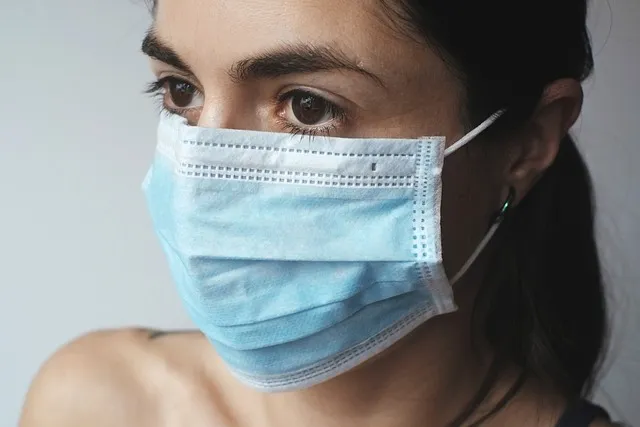Healthier Workplaces and Schools: Universal Strategies Against Infectious Diseases

Recent years have emphasized the importance of understanding and addressing the spread of infectious diseases in different workplace and educational settings.
Infectious diseases like COVID-19, RSV, influenza, and measles pose unique challenges due to their ability to spread rapidly in indoor environments. This blog post explores various scientifically backed strategies to mitigate these risks from many infectious diseases and promote healthier workplaces.

Why Do These Strategies Matter?
A study analyzing data from nearly 84,000 healthcare workers indicated that exposure to COVID-19 was more likely in the workplace than at home or in the community. This highlights the crucial role of effective infectious disease prevention and control measures in workplaces.
The study also highlighted significant reductions in workplace exposures following the introduction of improved infection prevention measures and the launch of vaccination programs, demonstrating the impact of these strategies in reducing the spread of infectious diseases within workplaces.
Furthermore, evolving risks in workplace infections have been noted. The world appears indifferent as we sleepwalk into another dangerous respiratory flu/COVID-19/RSV season.
The CDC reports that 1 in 31 patients will acquire at least one healthcare-associated infection (HAI) while being treated for something completely unrelated. HAIs include the rapidly growing global problem of antimicrobial resistance (AMR) of all microbial pathogens.
In the bigger picture, the World Health Organization (WHO) predicts that by 2050, AMR will result in approximately 10 million deaths annually, surpassing cancer, while the World Bank estimates that AMR will cost an additional USD$1 trillion in healthcare globally.
Understanding Airborne Diseases
Viruses that transmit as airborne particles, such as the viruses that cause COVID-19, the flu, and measles, pose a significant risk as they can squeeze into small places, nearly 10,000 times smaller than a human hair, travel long distances, up to 20 to 30 feet, and stay active in the air for at least 4 hours.
When you think about viral aerosols or viruses that transmit as airborne particles, think of them as water moving in a stream. Like the water, they will find the easiest path from one point to the next. With a rock or log in a stream, the water in the stream will find a path around it.
Our job is to add as many logs, rocks, and barriers – through things like ventilation, workplace policies, distance, and masks – to help protect ourselves and others.
The Four D’s of Infection Prevention
Duration
- Impact on Transmission: The longer time spent indoors, the more the air becomes filled with invisible airborne particles.
- Mitigation Strategies: Implementing flexible work schedules, encouraging breaks to reduce continuous exposure, and utilizing outdoor spaces for meetings when possible are effective ways to reduce the duration of exposure in indoor settings.
Density
- Impact on Transmission: How many people are in the space? How many are not vaccinated? How many people are sick and not showing signs? How many are not wearing masks? As these numbers increase, so does the risk.
- Mitigation Strategies: Managing occupancy levels, rearranging workspaces to reduce crowding, and adopting hybrid work models can effectively reduce the density of people in a given space and lower the risk of disease transmission.
Dilution
- Impact on Transmission: Being outdoors is relatively safe compared to being indoors, thanks to how easy it is to dilute the virus due to more open space, moving air, and the aid of sunlight to stop the virus.
- Mitigation Strategies: Strategies such as upgrading HVAC systems with HEPA filters, ensuring regular maintenance of ventilation systems, and utilizing portable air purifiers in areas with limited airflow can significantly improve air quality and reduce the risk of airborne disease transmission.
Distance
- Impact on Transmission: How far or near are people from one another? Infected individuals exhale a high amount of viral particles, which is why being close to an infected person increases your risk of infection. The relative distance between people is a risk factor to consider. The further you are away from the infected person, the lower your risk of getting infected.
- Mitigation Strategies: Redesigning workspaces to ensure adequate spacing between workstations, using physical barriers where necessary, and controlling the flow of movement within the workplace are practical ways to maintain physical distancing.
These four D’s help us understand how to make our workplaces safer by stopping the spread of infectious disease particles that make us sick.
Fast Facts: The Four D’s of Infectious Disease Prevention
- Duration: If people spend more time indoors where there’s less sunlight and wind to weaken the virus, the risk of the virus spreading increases because it can stay active for hours and build up over time, even with good air systems.
- Density: If there are more unmasked, unvaccinated, or asymptomatic infected people in a space, the chances of the disease spreading increase, even though vaccinations can reduce the risk and severity of infection.
- Dilution: If you’re outdoors or in a well-ventilated space, the risk of getting the virus is lower because open spaces, moving air, and sunlight can weaken the virus, but if a building lacks a good air system, simply opening windows can help dilute the virus and reduce the risk.
- Distance: If you’re closer to an infected person, the risk of getting the virus is higher, but the further away you are, the lower your risk becomes.
Creating a Culture of Health and Safety
- Workplace Policies: Developing comprehensive health and safety policies that are clearly communicated to all employees is critical for workplace health. Policies should include guidelines on mitigation strategies and be available in their language.
- Training and Communication: Regular training sessions to educate employees on the importance of infection prevention measures and effective communication strategies to inform everyone about the latest health guidelines and workplace safety protocols are essential.

Ready to Dive Deeper? Download Our eBook
Interested in more detailed strategies and sector-specific guidance?
Our “Healthier Workplaces and Schools” eBook is packed with extensive insights and practical tips to transform your workplace.
? Download the “Healthier Workplaces & Schools” eBook Now and start building a safer, healthier work environment today!


